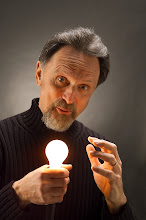
Each February thousands of people flock to NYC for the annual Toy Fair, an industry extravaganza. The throng consists of buyers, exhibitors, inventors and various other trade guests. Nary a mere consumer among those attendees. TIA insists badge holders perform some function that makes the industry tick. And it's a mature crowd. To get that entry badge, one must be over 18 years old.
One attendee, who has been missing the past few years after so many Toy Fairs where he was a magnet to inventors, is Millens (Mel) W. Taft. Beloved industry schtickmeister, Fred Kroll, each year would add to his record of 50++ Toy Fairs. But Mel Taft was at that same lofty total. He started attending the industry event in 1949 and likely exceeded Fred's self proclaimed attendance record. For most of Mel's Toy Fair appearances, he was the welcoming figure to inventors in Milton Bradley's suite at 200 5th Ave. After his MB days, he was a familiar figure at Fairs worldwide as an international toy and game licensing agent.
Mel was always easy to spot. Not many toy people reached his 6' 5" stature, wore a "crew cut" when coiffed styles were well passed the collar, or showed a preference to camel hair jackets over shiny pin-stripped suits. If not within reach of one of his loving back slaps, one knew he was nearby by the sound his friendly high decibel belly laugh that resonated throughout the aisles. Mel Taft had the inviting qualities that attracted inventors to MB. He was enthusiastic, inquisitive, energetic, supportive and playful. Here was a Harvard MBA always ready to roll up his sleeves and play. (And isn't play what the industry is all about?)
Mel hoped that inventors would mirror many of his qualities when they pitched ideas. That mantra was captured in his belief that to sell a new idea, "if you aren't enthusiastic and passionate about it, how can you expect others to be?" He was all enthusiasm for the projects he "sold" to his management associates that contributed to the phenomenal sales increase of over 100 times from his start date at MB. He was a driving force in making MB the world's largest game company. He was a firm believer that in the toy and game business, "product is king" and his vision of the importance of good product over the years brought many firsts to the MB line.
Mel hoped that inventors would mirror many of his qualities when they pitched ideas. That mantra was captured in his belief that to sell a new idea, "if you aren't enthusiastic and passionate about it, how can you expect others to be?" He was all enthusiasm for the projects he "sold" to his management associates that contributed to the phenomenal sales increase of over 100 times from his start date at MB. He was a driving force in making MB the world's largest game company. He was a firm believer that in the toy and game business, "product is king" and his vision of the importance of good product over the years brought many firsts to the MB line.
During his years as head of R&D, and a good many of those heading Marketing, too, MB introduced games featuring early TV characters. Hopalong Cassidy and Howdy Doody were soon followed by a long list of cartoon based games. Seeing that TV game shows appealed to the older crowd, Mel pushed for home versions of Concentration, Jeopardy, Price is Right, and many others. In fact, Concentration was the first MB million seller. He put the word "mass" in the category, "mass market games".

Sensing consumer attractions to celebrities, Mel lined up spokes persons including Art Linkletter, Lucy Ball, and the Odd Couple. Acting on advice that electronics were coming into toys and games big time, Mel signed on enhanced products like Simon, StarBird, preschool Alphie Robot, the Microvision system and a host of games with electronic features. To keep the MB line current with technology trends and consumer demands, he structured an advanced R&D group to design the latest micro-magic into products across the Company's varied lines.
But it is not merely in the success of countless products Mel championed to market that is testimonial to his contributions to the industry. He tirelessly badgered the professional inventing community to spawn new ideas and to bring those innovations to his company first. During his active days at MB, inventors had many licensee choices. But it was Mel's personal style--and yes, prospects of big royalty payoffs from successful MB sales--that got licensing deals done. With his belief that product was king, Mel Taft always treated inventors as kingmakers. Those types of inventor-marketer relationships so central in Mel's days need to be sustained today to continue the infusion of inventors' creativity and innovation into the current industry.
I might be a tad biased toward Mel Taft since he hired me at Milton Bradley in 1969; just another mark of his true R&D management genius! But in my view, after observing the new product side for many years, I can confidently say that few in the T&G industry have had careers filled with as many accomplishments as Millens W. Taft.







